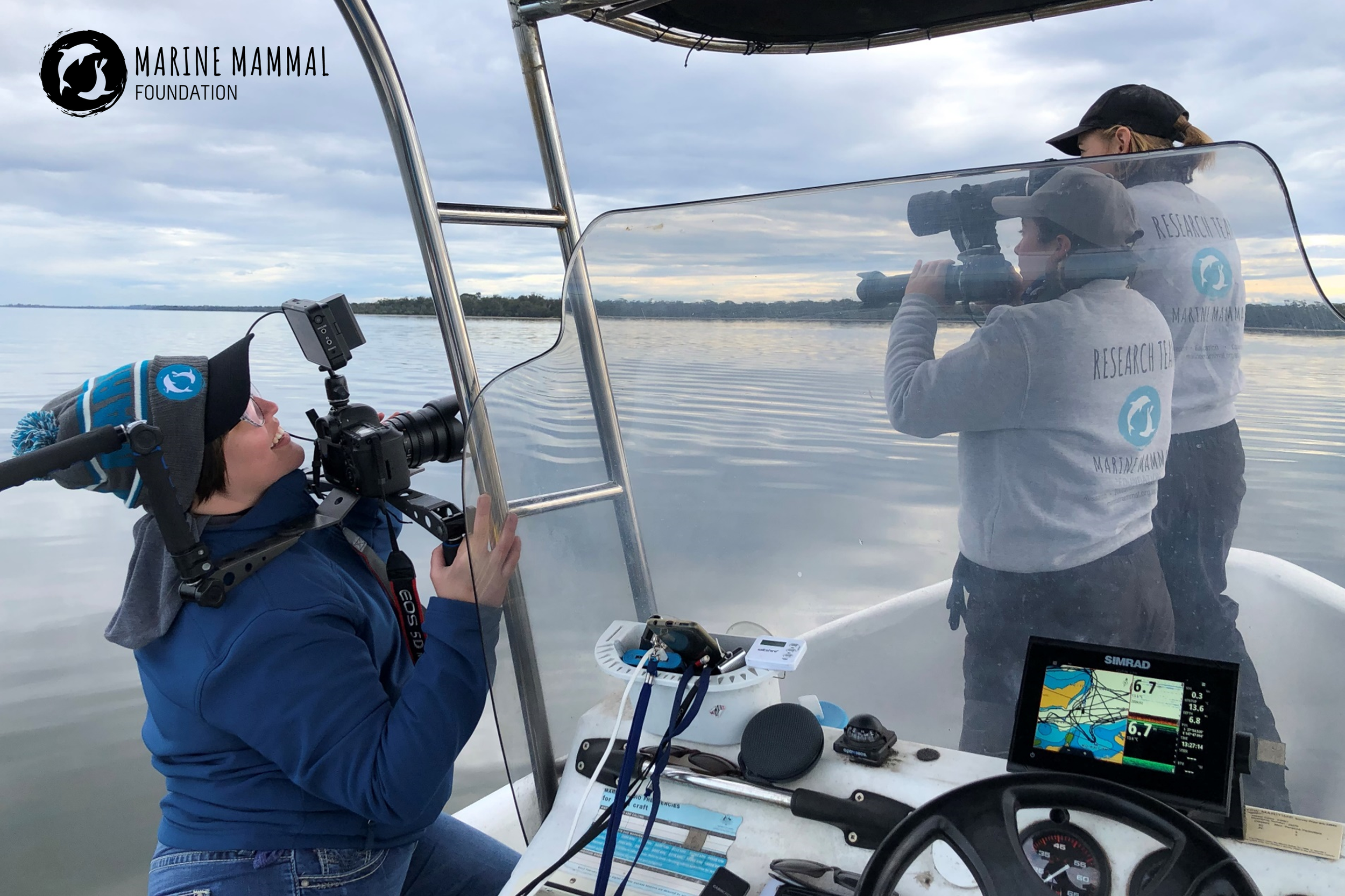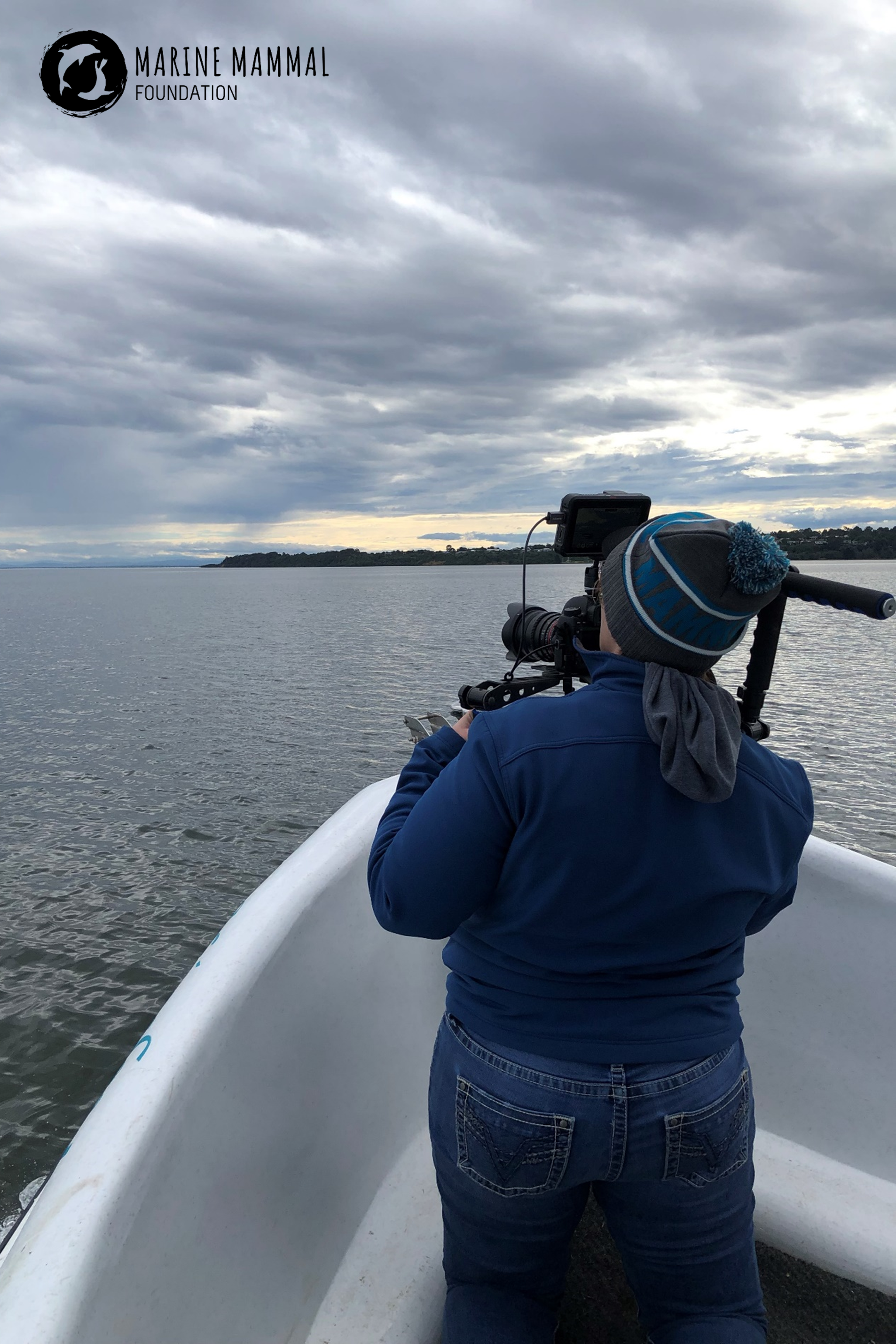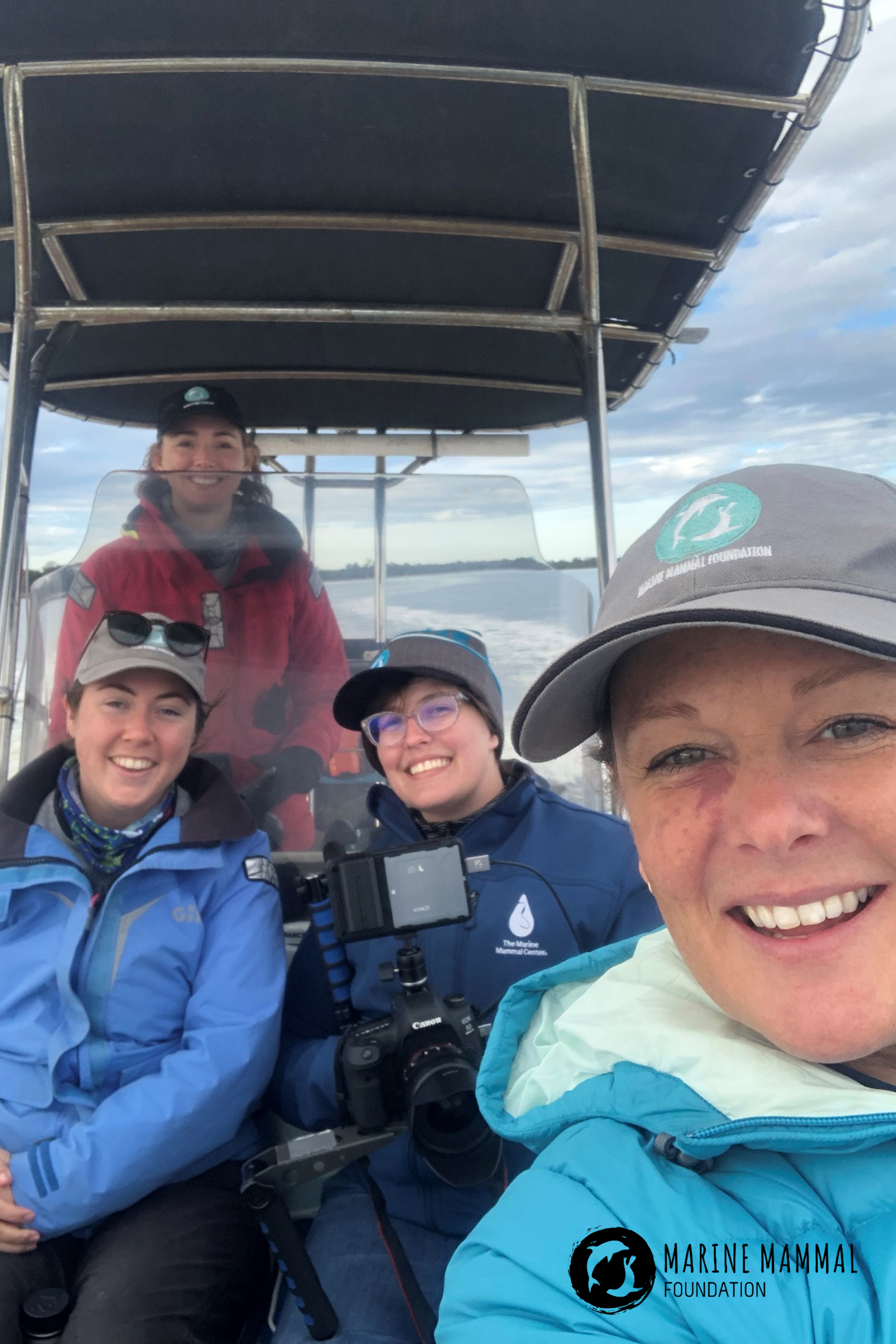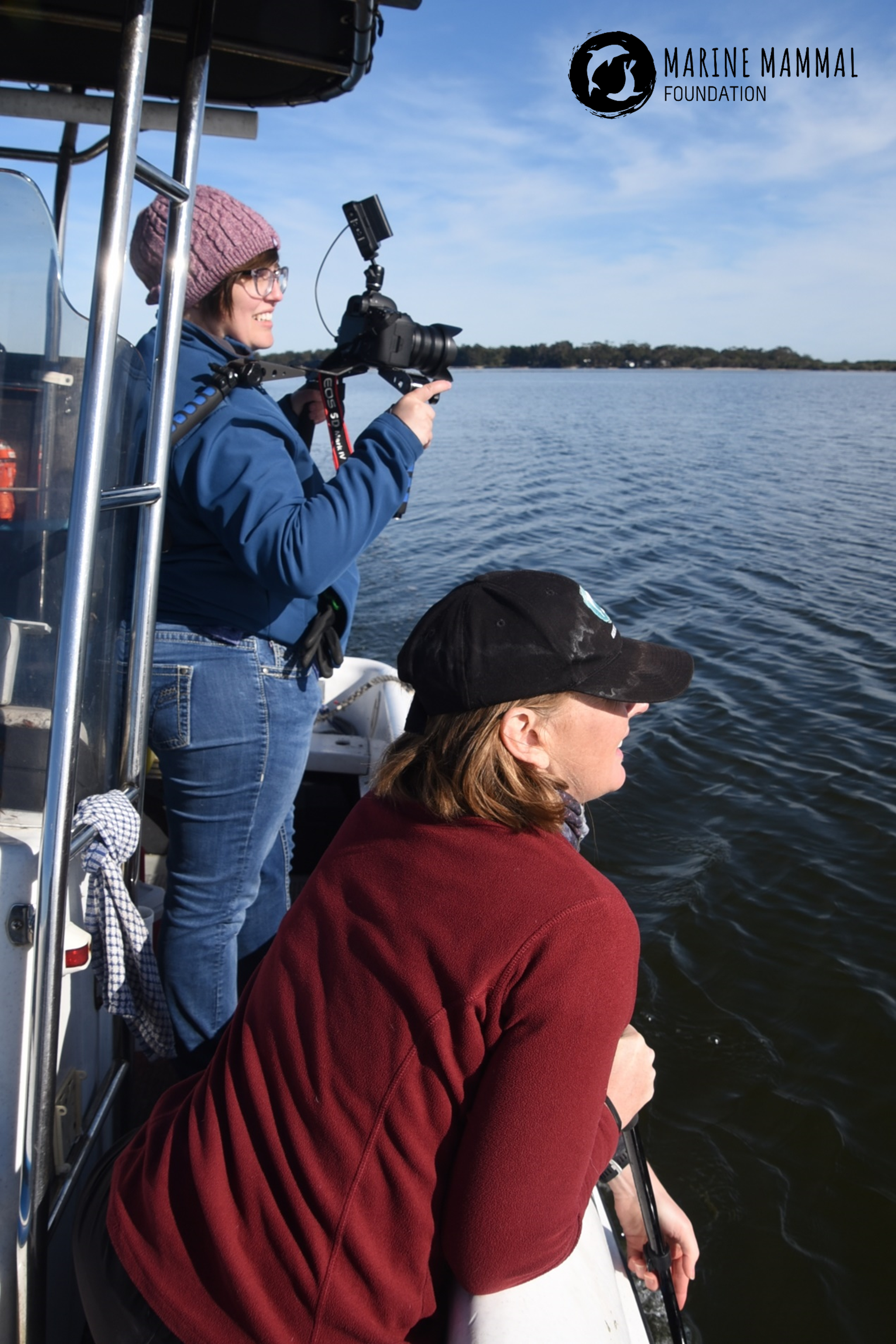Lights, Camera, Action: a documentary on fresh water skin disease
The Marine Mammal Foundation welcomed film student Olivia Andrus onboard our research vessel for the autumn survey of the Gippsland Lakes Burrunan dolphin population in May 2022.
Olivia is a master’s student in the Science and Natural History Filmmaking Program at Montana State University, USA. Known for award-winning films such as Diversified: The Florida Panther Story and Grounded, Olivia is now producing her documentary thesis film entitled The Dolphin Dilemma exploring the threats experienced by the Burrunan dolphin due to climate change, with a focus on the health effects observed as a result of changing environmental conditions. She learned about this phenomonon in Dr Kate’s recently released paper Fresh water skin disease in dolphins: a case definition based on pathology and environmental factors in Australia published in Nature.
The MMF research team were exited to be apporached by Olivia to take part in this venture. The team loved having her on board and enjoyed being involved in the creation of this multi-disciplinary documentary. The film is the result of international collaboration between The Marine Mammal Center based in Sausalito, California, where Olivia worked as a social media intern, and the Marine Mammal Foundation researchers headed by Dr Kate Robb.
She observed and documented our researchers taking water quality measurements throughout the Lakes system, Focal Follows of small pods of Burrunan dolphins, and the way the research team ensures they have investigated the entire of the Lakes system. Water quality measures are taken by our researchers at 22 different locations throughout the Lakes to monitor the changes in the quality the water throughout space and time, as the ‘saltiness’ and ‘freshness’ of the water is directly linked to the outbreak of the fresh water skin disease documented by Dr Kate in the 2020 publication. Focal Follows are a scientifically rigorous method for our researchers to observe the health and behaviour of our dolphins in a safe, non-invasive way that is replicable to ensure reliability of our data. A series of dedicated survey zones have been established by the MMF research team throughout the Gippsland Lakes to make it easier for our research team to quantify how much of the Lakes have been explored during one day of survey effort, allowing us to track how effectively we have covered the Lakes and make sure that no areas of the Lakes are missed by our researchers from survey to survey.
We look forward to seeing her finished product, and wish her the best of luck in her studies!






